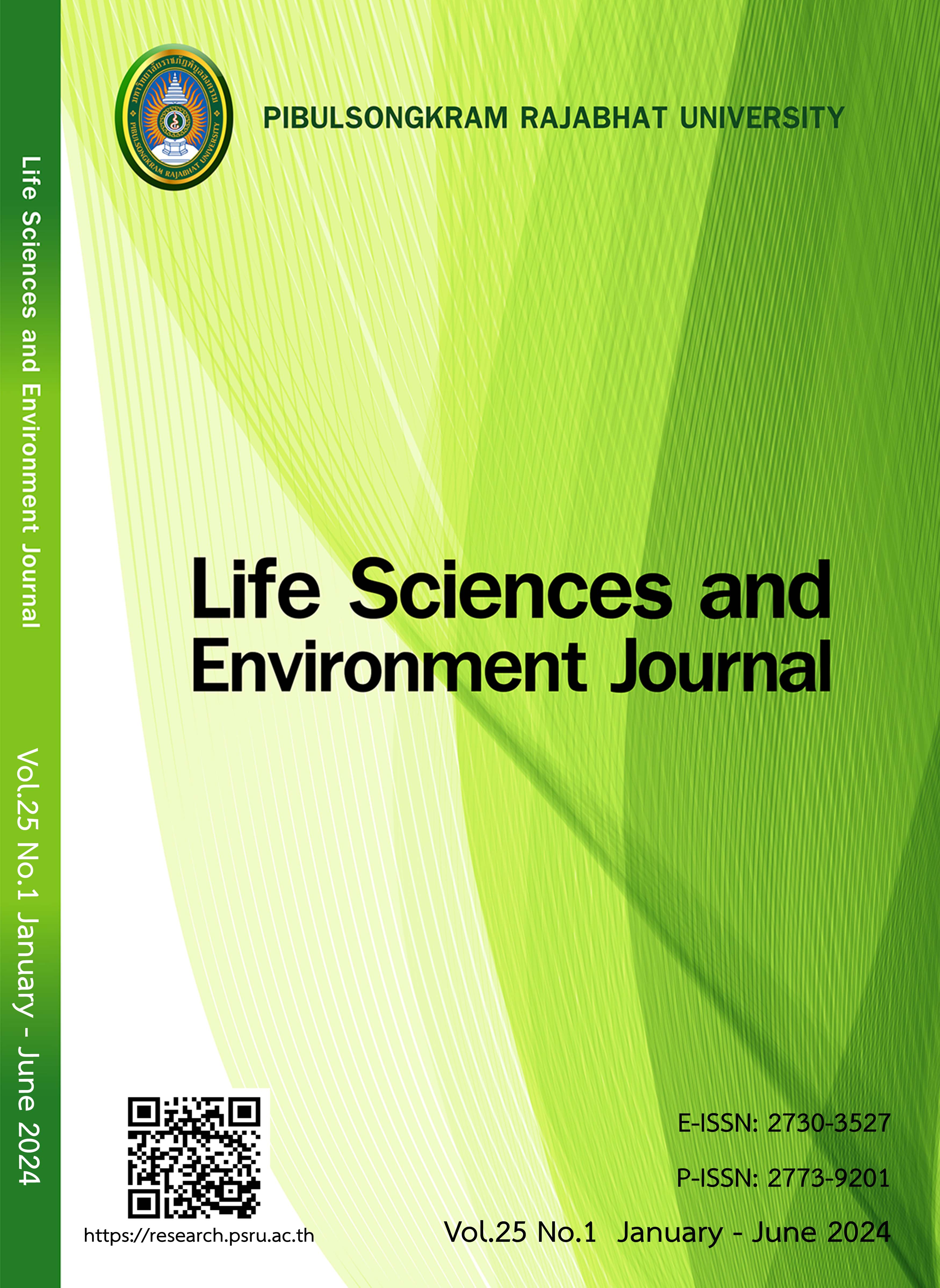ANALYSIS OF AGRICULTURAL DROUGHT RISK AREAS AND INFLUENCING FACTORS IN THE MAE WANG RIVER BASIN, CHIANG MAI PROVINCE
DOI:
https://doi.org/10.14456/lsej.2024.17Keywords:
agricultural drought risk areas, Mae Wang river basin, analytic hierarchy processAbstract
The research aims to analyze agricultural drought risk areas and study factors influencing agricultural drought in the Mae Wang River Basin. Eight factors were considered in the analysis: average annual rainfall, soil texture, land use, slope, drainage density, irrigation area, repeatedly drought-prone area, and the normalized difference vegetation index (NDVI). Weighting factors were determined through hierarchical analysis and analyzed using a geographic information system. Based on the results, the factor with the most significant influence is the average annual rainfall. In contrast, the factor with the least influence is the normalized difference vegetation index. Agricultural drought risk areas were classified into three levels: high-risk, medium-risk, and low-risk.
It was found that 96.94 percent of the area was classified as medium-risk. As for the high-risk areas were identified in Yang Khram Subdistrict, Santisuk Subdistrict, and Thung Pee Subdistrict, which are located in the eastern part of the study area. These areas have a plain geographical terrain, and the land is used for agriculture. Soil texture can be categorized into sandy soils groups. They have a low drainage density, measuring less than 1.03 kilometers per square kilometer. These regions experience rainfall within drought criteria and have a gentle slope. These research results will assist local authorities and decision-makers in effectively managing water and spatial resources to mitigate potential damage from droughts that may occur.
References
Chiang Mai Province Disaster Prevention and Mitigation Plan Committee. Chiang Mai Province Disaster Prevention and Mitigation Plan 2015 (revised version fiscal year 2020). Chiang Mai; 2020.
Chomtha T. A Study of Meteorological Drought Index Model for Drought Areas in Northeastern Thailand. Bangkok: Meteorological Department; 2006.
MGR Online. Severe drought! The Mae Wang reservoir has drastically reduced, leaving floating houses stranded. Orchard farmers have set up rows of water pumps. 2017. Available at: https://mgronline.com/local/detail/9600000025185. Accessed December 10, 2022.
Peainlert S, Tongdeenok P, Kaewjampa, N. Drought risk area assessment using remotely sensed data and meteorological data in Chern Sub-watershed. KKU Research Journal (Graduate Studies) 2018; 18(3):67-83.
Pinthong A, Kwanyuen B. Testing the use of composite drought index to monitoring agricultural drought in Thailand. King Mongkut’s Agricultural Journal 2018;36(3):136-146.
Ruthamnong S. Geomatics for analysis of flood and drought risk areas in Klong Suan Mak Basin, Kamphaeng Phet Province. The Golden Teak: Humanity and Social Science Journal (GTHJ.) 2017; 23(2):86-103.
Saaty TL. Decision making with the analytic hierarchy process. International Journal of Services Science 2008;1(1):83-98.
Saiuparad S, Phanthuna P, Suphirat C. Drought analysis for water management on geographic information system. Bangkok: Rajamangala University of Technology Phra Nakhon; 2021.
Seekaw A, Mongkolsawat C, Suwanweerakamton R. Using standardized vegetation index to assess drought areas in Northeast Thailand. Journal of Remote Sensing and GIS Association of Thailand 2014;15(2):25-38.
Singto A. Repeatedly dry areas in the northern region. Bangkok: Land Development Department; 2021.
Srisurat S. Drought Risk Area Analysis in Nakhonnayok Province. Bangkok: Srinakharinwirot University; 2010.
Suksri P. Study of agricultural drought affected areas in the maize growing area in Dan Sai District, Loei Province. Bachelor of Science. Faculty of Agriculture Natural Resources and Environment, Naresuan University; 2022.
Thai Meteorological Department. Drought, 2022. Available at: https://www.tmd.go.th/info/drought. Accessed September 9, 2022.
Waranuchit W, Juthakorn J, Prakanrat S, Amatayakul P, Chomtha T, Suparatanaphan S, Yuttaphan A, et al. Study on Drought Index in Thailand 2012. Bangkok: Meteorological Department; 2014.
Wongsa S. The Application of geographic information system for analyzing drought risk area in Lampang Province. Master of Arts (Social Development Administration. Graduate School of Social Development and Management+ strategy, National Institute of Development Administration (NIDA); 2016.
Downloads
Published
How to Cite
Issue
Section
License
Copyright (c) 2024 Life Sciences and Environment Journal

This work is licensed under a Creative Commons Attribution-NonCommercial-NoDerivatives 4.0 International License.
Each article is copyrighted © by its author(s) and is published under license from the author(s).










